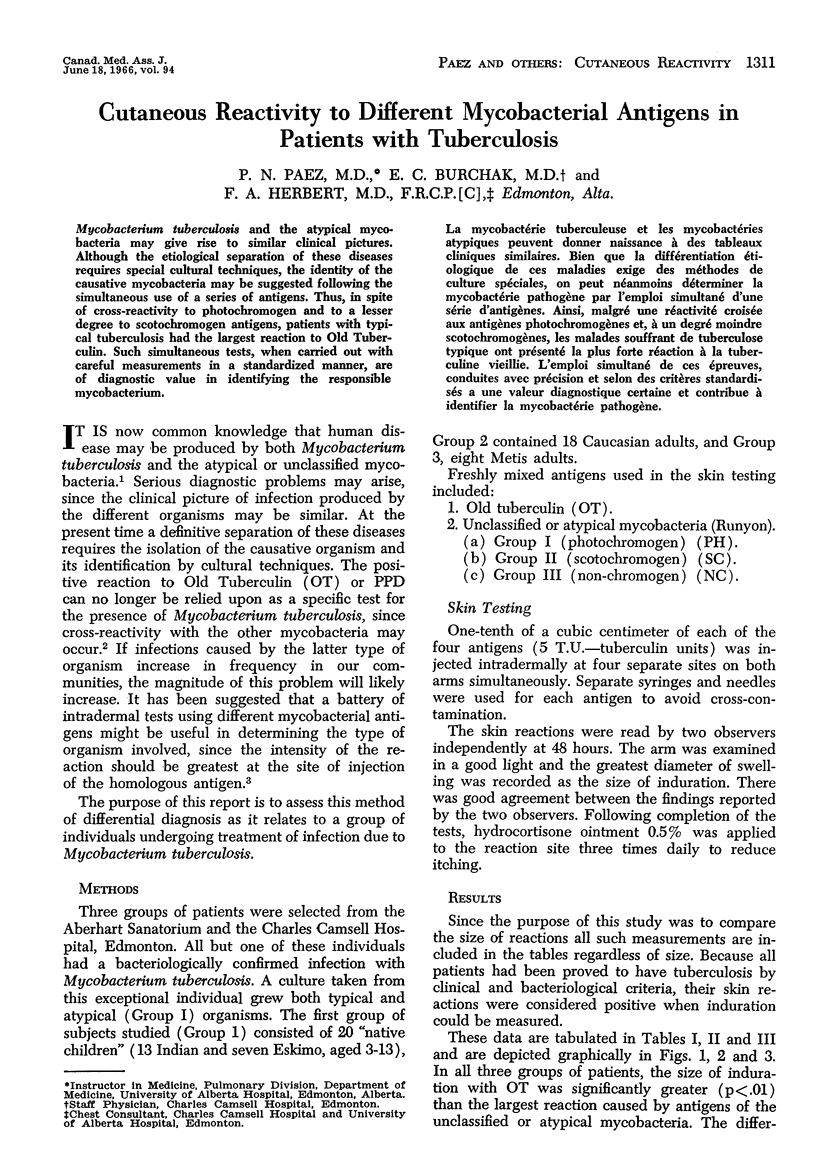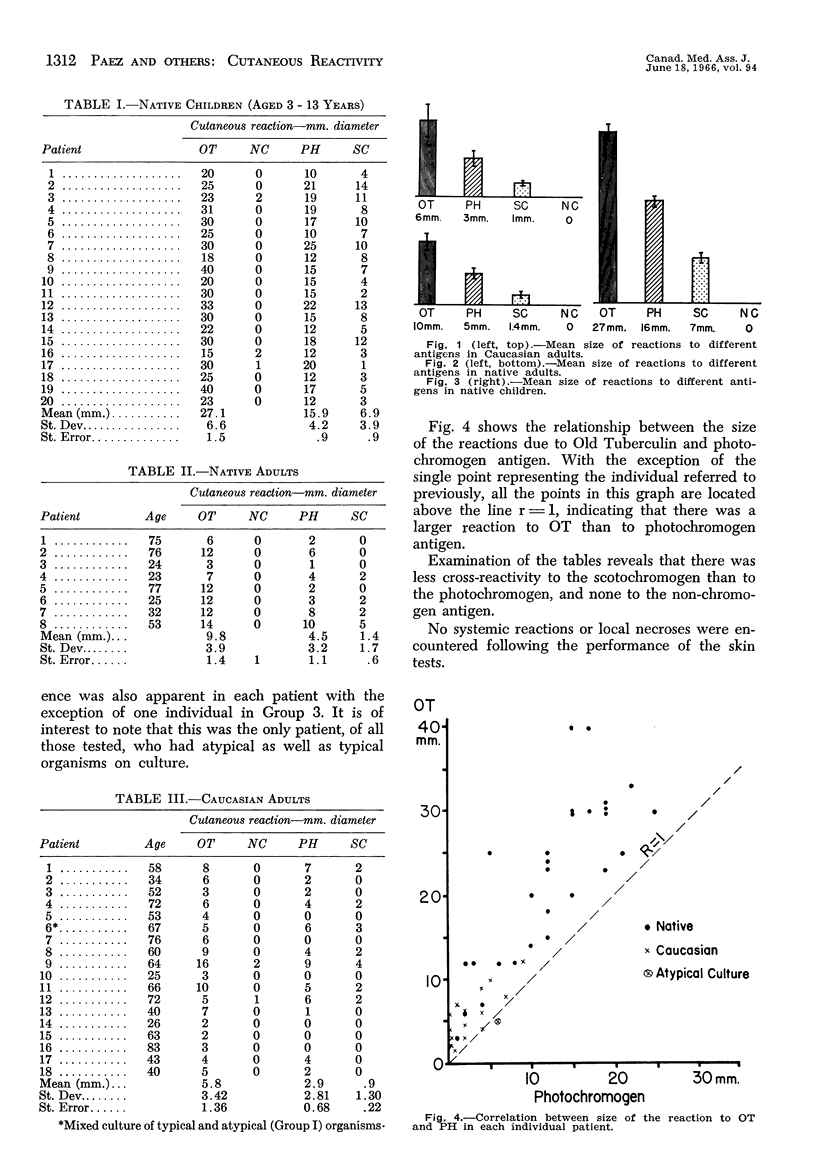Abstract
Mycobacterium tuberculosis and the atypical mycobacteria may give rise to similar clinical pictures. Although the etiological separation of these diseases requires special cultural techniques, the identity of the causative mycobacteria may be suggested following the simultaneous use of a series of antigens. Thus, in spite of cross-reactivity to photochromogen and to a lesser degree to scotochromogen antigens, patients with typical tuberculosis had the largest reaction to Old Tuberculin. Such simultaneous tests, when carried out with careful measurements in a standardized manner, are of diagnostic value in identifying the responsible mycobacterium.
Full text
PDF


Selected References
These references are in PubMed. This may not be the complete list of references from this article.
- CHAPMAN J. S. The present status of the unclassified mycobacteria. Am J Med. 1962 Oct;33:471–477. doi: 10.1016/0002-9343(62)90258-9. [DOI] [PubMed] [Google Scholar]
- CHAPMAN J. S. The present status of the unclassified mycobacteria. Am J Med. 1962 Oct;33:471–477. doi: 10.1016/0002-9343(62)90258-9. [DOI] [PubMed] [Google Scholar]
- HSU K. H., JENKINS D. E., SORIANO L. R. The tuberculin reaction associated with tuberculous infection. Am Rev Respir Dis. 1963 Apr;87:493–503. doi: 10.1164/arrd.1963.87.4.493. [DOI] [PubMed] [Google Scholar]


